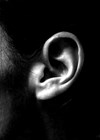Audiology features
Patient-centred audiological rehabilitation: facilitating and hindering factors for implementation
Introduction Patient-centred care in the health sector is a worldwide concern [1, 2]. Patient-centred rehabilitation is characterised by availability, appropriateness, preference, and timelines [3]. A consensus report by the Institute of Medicine [4] defines a patient-centred approach as ‘providing care...
Semi implantable bone conduction devices: challenges and developments
Bone conduction mechanisms and history of bone conduction aids Bone conduction hearing devices work by stimulating hair cells via the bone conduction hearing pathways. These pathways are less well understood than the air conduction pathways, but recent research has shown...
2014: Are today’s implantable devices better than conventional solutions for patients with conductive or mixed hearing loss?
Patients with conductive or mixed hearing loss become candidates for amplification when reconstructive surgery is not viable. Three common amplification options are conventional acoustic devices, such as behind-the-ear devices (BTEs), (implantable) bone-conduction devices and active middle ear implants. The goal...
Long-term outcomes of children and young people with cochlear implants
Introduction Profound childhood hearing loss has a huge impact on early communication skills, the acquisition of spoken language, and hence on educational attainments and employment prospects. Over the centuries, educators of the deaf attempted to overcome the challenge by using...
Auditory brainstem implant results in adults and children
Background The auditory brainstem implant (ABI) has been developed from cochlear implant (CI) technology and is indicated for people who have anatomical abnormalities of the cochlea or dysfunction of the auditory nerve. The majority of people who have received an...
Music and cochlear implants
Introduction The introduction of multichannel cochlear implants (CIs) in the early 1980s provided children and adults with severe and profound hearing losses with greatly improved speech perception skills. In this paper, however, I am going to focus on an area...
Cochlear implant referral: how can we do better?
Considerable progress has been made over the last few years in improving access to cochlear implantation (CI) in the UK for children and adults with severe to profound deafness. But we are still not treating children early enough, and we...
European funding for the tinnitus research network TINNET
Over 70 million people in Europe experience tinnitus, and for seven million it creates a debilitating condition. Severe tinnitus is often associated with depression, anxiety and insomnia, resulting in an enormous socio-economic impact [1]. It has been estimated that 13...
Drawing pictures and telling stories: treating tinnitus in childhood
There is increasing awareness that tinnitus is not restricted to adults. Indeed, the available evidence suggests that some experience of tinnitus in children is fairly common [1]. For many, tinnitus has little effect and requires limited or no intervention. For...
Hearing care systems – European examples
In this article, Vice President of the European Federation of Hard of Hearing, Lidia Best, explores the drivers for improvement and change in European hearing care systems. In 2010, the European Committee for Standardization (CEN) issued the EN-15927 European Standard...
Universal newborn hearing screening: a global health perspective
Intuitively, as health professionals, we know that universal newborn hearing screening (UNHS) makes sense. Bolajoko Olusanya outlines how UNHS fits in with global health priorities, as well as illustrating how such programmes can help to deliver additional benefits to communities....
Plasticity with cochlear implants: individual factors in the outcomes
Andrej Kral gives us an overview of neuronal plasticity in congenital hearing loss, and discusses why it is core to our clinical interventions in hearing loss and rehabilitation. The brain is born immature and undergoes extensive shaping during early development....

















